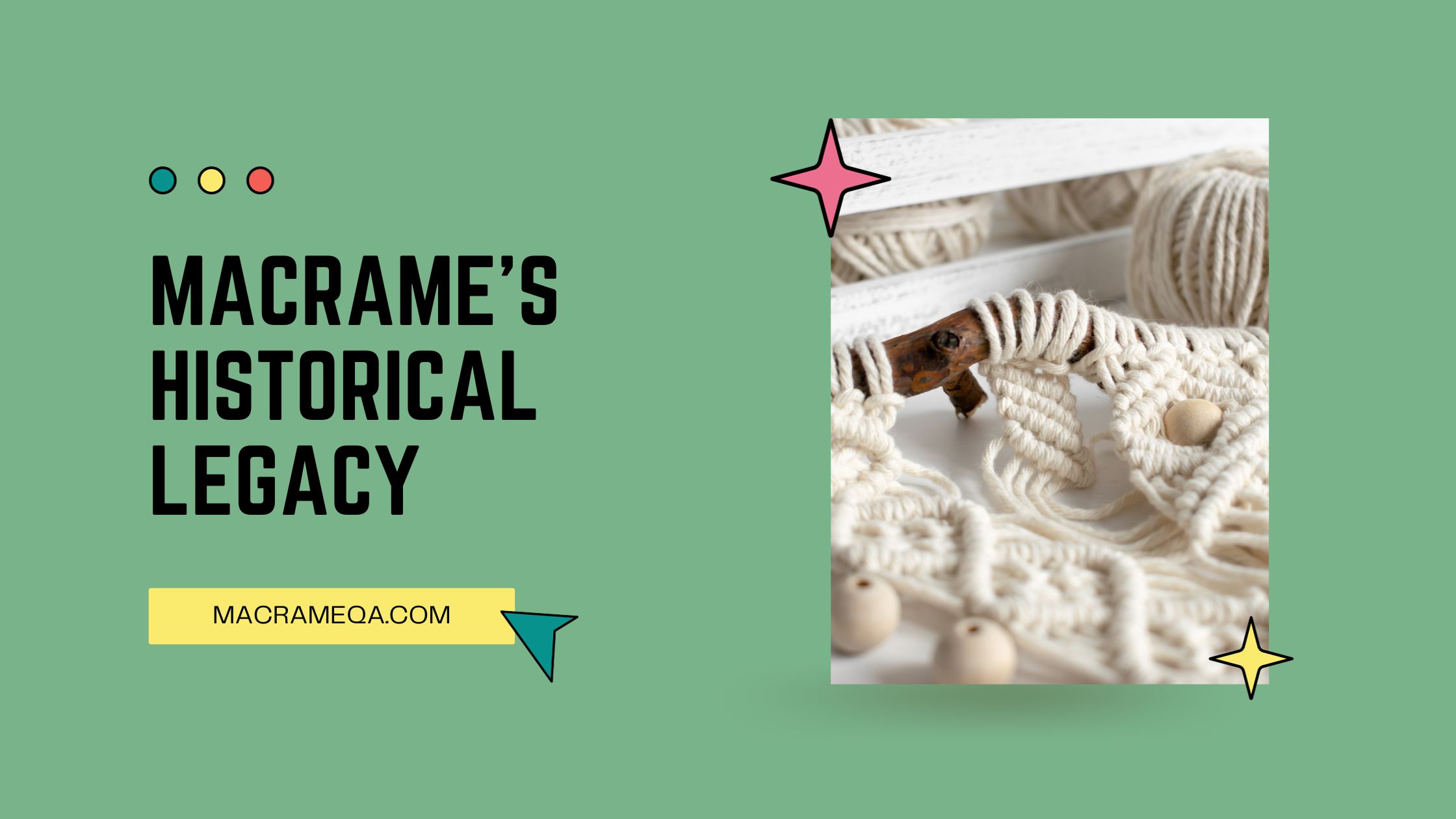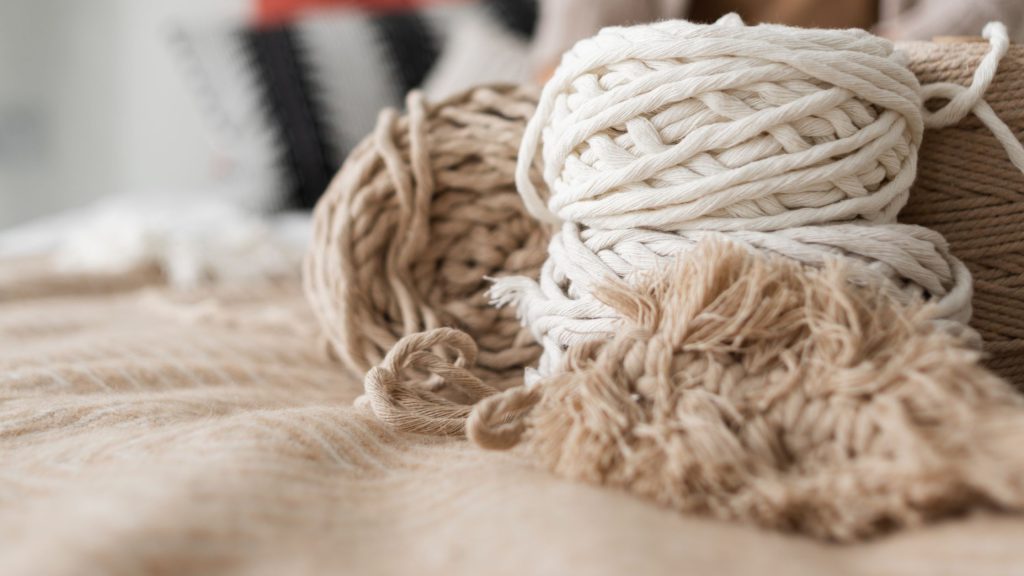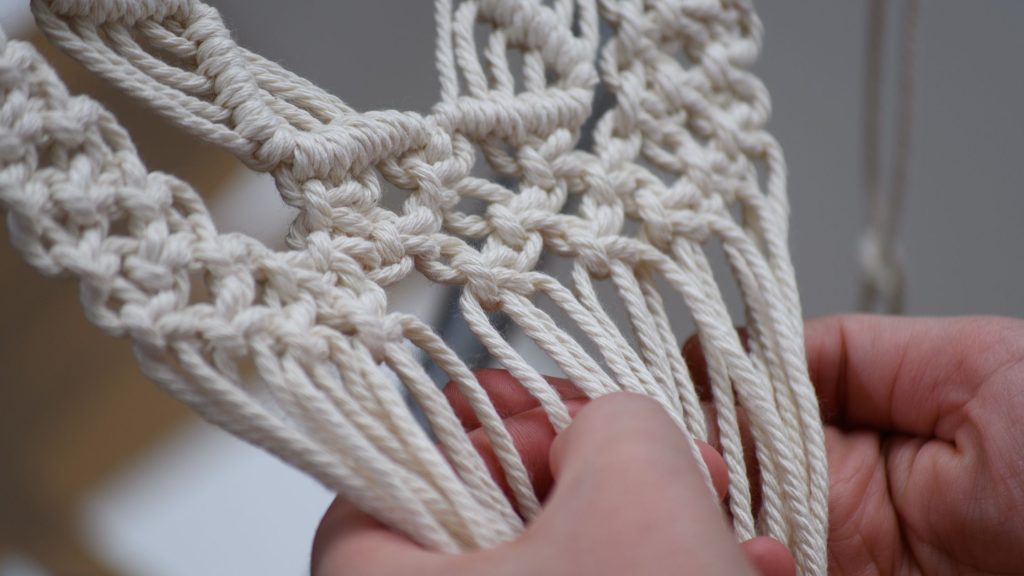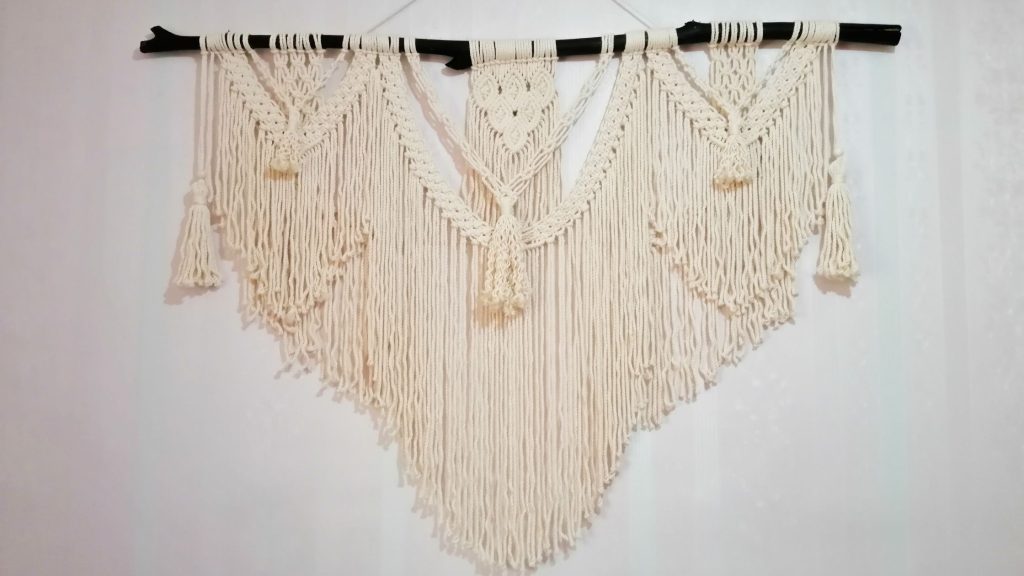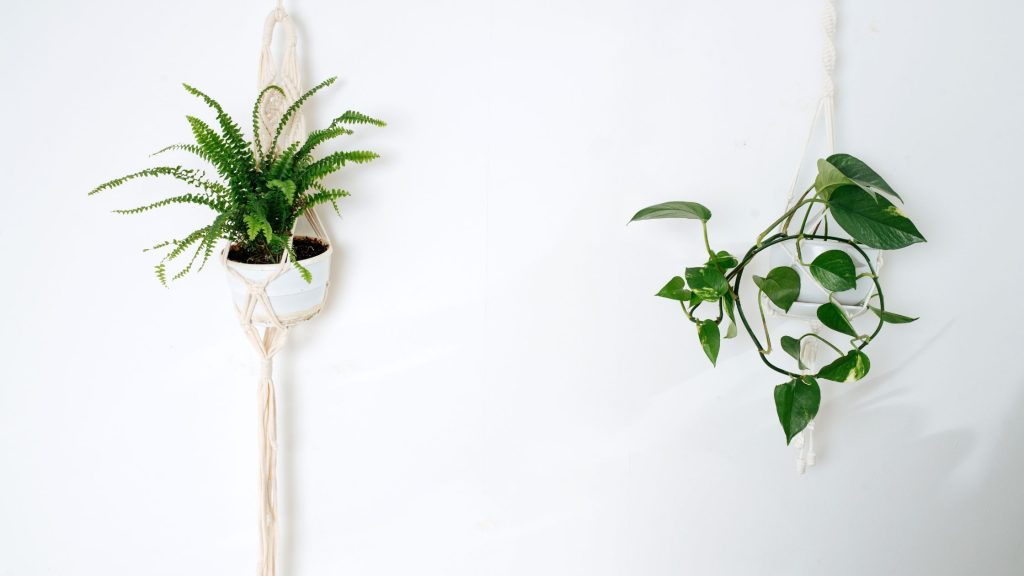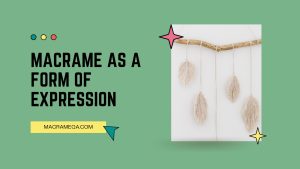Macrame, with its intricate knots and delicate patterns, has a rich historical legacy that continues to influence modern craft practices. From its origins in the ancient civilizations of the Babylonians and Assyrians to its resurgence in the 1970s, macrame has captivated artisans and enthusiasts alike. The techniques and designs developed over centuries have been passed down through generations, resulting in a contemporary craft movement that combines traditional skills with innovative twists. In this article, we will explore how macrame’s historical legacy has shaped and inspired modern craft practices, bridging the gap between the past and the present.
Macrame’s Historical Origins
Macrame, a textile art form created by knotting fibers together, has ancient origins that can be traced back to various cultures. Its history can be traced back to the 13th-century Arab weavers who used macrame techniques to create intricate designs in their textiles. These techniques were then passed down through generations and spread across different cultures, including the Chinese, Persian, and European civilizations.
Ancient origins in textiles
In ancient times, macrame served both functional and decorative purposes. It was used to create durable and intricate textiles, such as rugs, curtains, and clothing. The art form was particularly popular in the Middle East, where it flourished among the Bedouin tribes, who used macrame to make tents, camel decorations, and saddlebags. Macrame also found its way into the intricate knot work of sailors, who used it to create intricate and ornate designs on their seafaring gear.
Spread across cultures
As the world expanded and cultures came into contact with one another, macrame techniques spread across continents. The Chinese, for example, mixed their knotting techniques with macrame to create beautiful silk garments and accessories. In Europe, macrame flourished during the Renaissance period, with the lace-like patterns becoming popular among the upper class. It was also during this time that macrame gained a foothold in the decorative arts, with hangings, tablecloths, and window coverings adorned with intricate macrame designs.
Macrame in decorative arts
Macrame’s popularity in the decorative arts continued well into the 19th and 20th centuries. It was often used to embellish furniture, creating unique and intricate designs on chairs, headboards, and lampshades. During this time, macrame also gained recognition in the world of interior design, with designers incorporating macrame hangings and wall art into their projects. This contributed to macrame’s association with bohemian and hippie aesthetics, which became particularly prominent during the counterculture movement of the 1960s and 1970s.
Revival in the 1960s and 1970s
The 1960s and 1970s marked a significant revival of macrame, as it became a popular craft among the masses. The simplicity of the art form, combined with its versatility, made it accessible to people of all skill levels.
Macrame is a popular craft
Macrame became a popular craft during this time, with many people embracing it as a creative outlet. Craft stores began stocking macrame supplies, and books and magazines on the subject became bestsellers. The DIY movement of the era encouraged individuals to explore their creativity and create their macrame projects.
Incorporation into fashion and home decor
Macrame also found its way into the world of fashion and home decor during this period. From macrame vests to wall hangings and plant hangers, macrame became a bohemian fashion and home decor trend staple. Its natural, earthy aesthetic and ability to add texture and visual interest to any space made it highly sought after by those who sought an alternative, non-traditional style.
Influence of counterculture movement
The counterculture movement of the 1960s and 1970s heavily influenced the popularity of macrame during this time. The rejection of mainstream societal norms and the embrace of individualism aligned perfectly with the handmade, nature-inspired aesthetic of macrame. Macrame became a symbol of the free-spirited, anti-establishment lifestyle, with hippies and bohemians embracing it as a form of self-expression.
Macrame Techniques and Materials
Macrame is a versatile art form that can be achieved using a variety of knots and materials. The combination of different knots and fibers allows for endless possibilities in design.
Basic knots and techniques
The foundation of macrame lies in its basic knots, which are the building blocks for creating various intricate designs. The most common macrame knots include the square knot, half hitch, and lark’s head knot. These knots can be combined and repeated to create patterns, textures, and shapes in macrame projects.
A variety of materials used
One of the great appeals of macrame is its ability to incorporate a wide range of materials. Traditional macrame was often done with natural fibers like cotton, hemp, and jute. However, modern macrame artists have also embraced other materials such as yarn, rope, leather, and even recycled materials like t-shirts and plastic bags. The choice of material can greatly affect the final look and feel of the macrame piece.
Innovation in macrame designs
Over time, macrame has evolved to incorporate innovative designs and techniques. Macrame artists experiment with different knot combinations, incorporate beads and other embellishments, and explore intricate patterns and structures. This constant innovation keeps macrame fresh and exciting, pushing the boundaries of what can be achieved with knotting techniques.
Influence on Contemporary Craft Practices
Macrame’s influence extends beyond traditional textile art forms. It has found a place in contemporary craft practices, including fiber arts, fashion, and home decor.
Macrame in fiber arts and installations
In the realm of fiber arts, macrame is often used as a medium for creating large-scale installations and sculptures. The flexibility and strength of macrame knots allow artists to create intricate and visually striking pieces that can be displayed both indoors and outdoors. Macrame installations have been featured in art galleries, museums, and public spaces, adding a unique touch to the contemporary art scene.
Integration into fashion and accessory design
Macrame has also made its way into the world of fashion and accessory design. Designers have incorporated macrame techniques into clothing, jewelry, and accessories, creating unique and statement-making pieces. Macrame handbags, earrings, and necklaces have become particularly popular, offering a bohemian and artisanal touch to any outfit.
Macrame in interior design and home decor
Macrame’s versatile nature has also made it a popular choice in interior design and home decor. Wall hangings, plant hangers, curtains, and even macrame chandeliers are just a few examples of how macrame can add texture, dimension, and visual interest to any space. The natural fibers and earthy tones often associated with macrame make it a perfect fit for bohemian, rustic, or Scandinavian-inspired interiors.
Macrame and Sustainable Crafting
In recent years, there has been a growing interest in sustainable and eco-friendly crafting practices. Macrame’s use of natural and recycled materials aligns perfectly with this movement.
Use of natural and recycled materials
Macrame artists often prioritize the use of natural, biodegradable fibers like cotton, hemp, and jute. These materials are renewable and have a lower impact on the environment compared to synthetic alternatives. Additionally, macrame artists have embraced the use of recycled materials, such as repurposing old t-shirts or plastic bags, demonstrating a commitment to reducing waste and promoting sustainability.
Low impact on the environment
Unlike other crafts that may require specialized tools or machinery, macrame can be done with minimal equipment. The simplicity of macrame makes it a low-impact craft, relying primarily on the artist’s hands and creativity. This reduces the consumption of energy and resources typically associated with manufacturing processes, making macrame a sustainable choice for those looking to lessen their environmental impact.
Promoting the slow crafting movement
Macrame’s focus on handwork and attention to detail aligns with the principles of the slow crafting movement. Slow crafting emphasizes the value of mindfulness, intentionality, and sustainable practices in the creation of handmade goods. By engaging in macrame, individuals are encouraged to slow down, enjoy the process, and cultivate a deeper connection with their craft.
Macrame as a Therapeutic and Mindful Practice
Beyond its aesthetic value, macrame can also be a therapeutic and mindful practice, offering numerous benefits for mental health and well-being.
Benefits of macrame for mental health
Engaging in macrame can have a positive impact on mental health. The repetitive nature of knotting allows for a meditative experience, promoting relaxation and stress relief. The focus required for intricate designs helps to foster mindfulness and a sense of calm. Macrame can also serve as a creative outlet for self-expression, providing a sense of accomplishment and boosting self-esteem.
Promoting mindfulness and focus
Macrame requires attention to detail and focus, which can help individuals cultivate mindfulness. By immersing themselves in the process of knotting, individuals can find a sense of peace and presence in the present moment. The rhythmic motion of tying knots can be soothing, allowing for a break from the noisy distractions of daily life.
Macrame as a form of art therapy
Art therapy is a recognized form of therapy that utilizes the creative process to improve mental and emotional well-being. Macrame can be used as a form of art therapy, allowing individuals to explore their emotions, unleash their creativity, and develop a greater sense of self-awareness. Knotting can symbolize the process of unraveling and reweaving, making it a powerful tool for self-expression and personal growth.
Macrame in the Digital Age
With the advent of the internet and social media, macrame has found a new platform for sharing and learning.
Online tutorials and communities
The internet has made it easier than ever to access macrame tutorials and resources. Websites, blogs, and video-sharing platforms like YouTube are now home to a wealth of instructional content that guides beginners through the process of creating macrame projects. Online communities have also formed, allowing macrame enthusiasts to connect, share their work, and exchange tips and inspiration.
Social media platforms and macrame influencers
Social media platforms such as Instagram and Pinterest have become breeding grounds for macrame inspiration. Macrame artists and enthusiasts share their work, creating a virtual gallery of macrame creations that spans the globe. Macrame influencers have also emerged, with their visually stunning and innovative designs inspiring countless others to try their hand at the art form.
Digital resources for macrame enthusiasts
The digital age has brought with it a plethora of digital resources for macrame enthusiasts. E-books, downloadable patterns, and online courses provide individuals with the opportunity to learn new techniques and expand their macrame skills from the comfort of their own homes. The accessibility and convenience of these resources have contributed to the continued growth of macrame as a popular craft.
Macrame’s Influence on Other Crafts
Macrame’s versatility and unique aesthetic have influenced various other crafts, leading to innovative collaborations and new art forms.
Integration with other fiber arts
Macrame has seamlessly integrated with other fiber arts, such as weaving and knitting. Artists often combine macrame techniques with these traditional crafts, creating hybrid pieces that showcase the best of both worlds. Macrame weavings, for example, blend the intricate knotting of macrame with the texture and structure of weaving, resulting in stunningly unique wall hangings.
Influence on jewelry making
Macrame has also made its mark on the world of jewelry making. Macrame knots can be used to create intricate and delicate patterns, providing a unique and handmade touch to necklaces, bracelets, and earrings. The versatility and lightweight nature of macrame make it a popular choice for jewelry designers looking to create wearable pieces with a bohemian flair.
Incorporation into mixed media artworks
The art world has also embraced macrame as a medium for mixed media artworks. Macrame can be combined with painting, sculpture, and other mediums to create visually compelling pieces that blend texture, color, and form. This integration of macrame with other art forms pushes the boundaries of what can be achieved with this traditional craft.
Challenges and Criticisms of Macrame
While macrame has gained popularity and recognition in modern craft practices, it is not without its challenges and criticisms.
Lack of diversity in traditional macrame techniques
Traditional macrame techniques have often been passed down through specific cultures and communities, leading to a lack of diversity in the art form. This has led to the dominance of certain styles and designs, potentially overshadowing the creativity and contributions of other cultures. Efforts to embrace and celebrate the diverse origins of macrame are essential to ensure a fair representation of this rich craft.
Appropriation and commercialization
Macrame’s rise in popularity has also led to issues of appropriation and commercialization. Traditionally associated with specific cultures, macrame has been appropriated and mass-produced without proper acknowledgment or understanding of its cultural significance. The commodification of macrame can dilute its artistic value and undermine the contributions of the communities from which it originated.
Critiques of macrame as kitschy or outdated
Some critics view macrame as kitschy or outdated, associating it with a bygone era or outdated aesthetic. This perception can diminish the value and relevance of macrame in contemporary craft practices. However, with the resurgence of interest in handmade and sustainable crafts, macrame has proven its ability to adapt and evolve, challenging these limited perceptions.
The Future of Macrame in Craft Practices
As macrame continues to evolve and gain recognition, its future in craft practices looks promising. The art form will undoubtedly continue to innovate and inspire future generations.
Innovation and experimentation
Macrame artists constantly push the boundaries of the craft, experimenting with new knots, materials, and techniques. As technology advances and new materials become available, macrame will continue to evolve and adapt to the changing needs and tastes of artists and enthusiasts.
Macrame in sustainable and ethical fashion
With sustainability and ethical practices gaining more importance in the fashion industry, macrame has the potential to play a significant role. Its use of natural and recycled materials aligns perfectly with the growing demand for eco-friendly and socially responsible fashion. Macrame fashion brands and designers have the opportunity to create sustainable and unique pieces that appeal to conscious consumers.
Continued influence and evolution
Macrame’s influence on modern craft practices is unlikely to diminish in the foreseeable future. As the art form continues to capture the imagination of artists and enthusiasts alike, its unique aesthetic and versatility will continue to inspire and influence other crafts. Whether it’s through collaborations with other mediums or innovative techniques, macrame’s legacy will endure, shaping the craft landscape for years to come.
Conclusion
In conclusion, macrame’s historical legacy has had a profound impact on modern craft practices. From its ancient origins in textiles to its revival in the counterculture movement of the 1960s and 1970s, macrame has evolved and adapted to the changing times. Its influence can be seen in the integration of macrame into fashion, home decor, and other crafts, as well as its promotion of sustainable and ethical crafting practices. While macrame is not without its challenges and criticisms, its future in craft practices looks promising, with continued innovation and evolution on the horizon. As long as some artists and enthusiasts appreciate the beauty and versatility of macrame, its legacy will continue to flourish.

